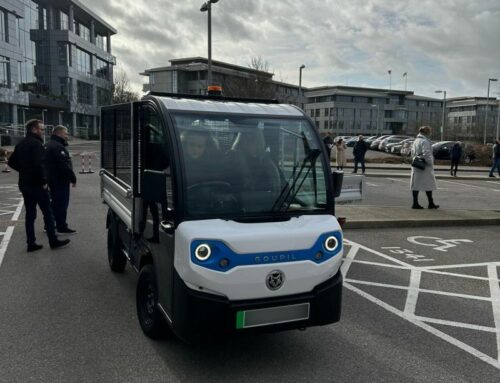IN A BID to improve road safety, the European Parliament has voted to go ahead with the introduction of new minimum vehicle safety standards for all new cars, vans lorries and buses from 2022.
Among the technology standards to be made mandatory is Intelligent Speed Assistance (ISA). While most safety-conscious van fleet operators will welcome the move, what can they do to prepare?
The measures being introduced by the European Commission have been designed with the aim of improving overall road safety and reducing the number of serious road traffic accidents. Specifically, the European Transport Safety Council (ETSC) has estimated that the new measures could save 25,000 lives and avoid about 140,000 road traffic accidents by 2038.
The new ISA systems use the latest in on-board sign recognition camera technology, in conjunction with GPS information, to detect the road speed limits where the vehicle is travelling. If the driver exceeds the specified speed limit, the vehicle will automatically slow down. The driver will be able to override the system by pressing down on the accelerator pedal, but an alarm will sound if this action is taken.
In addition to this ‘speed limiting’ technology, other safety features will become mandatory for all new vehicles by 2022, including automated emergency braking, electronic data recorders and new legislation to tackle drink driving, making it easier to retrofit an alcohol interlock device
Although these new safety measures are essentially good news, there is still a long way to go when it comes to eliminating ‘dangerous driving’ altogether. Intelligent speed adaption simply limits the vehicle from driving over the designated speed limit for that road. However, not only is it possible to override the technology, it is important to remember that the majority of speed-related collisions are a result of excess speed for particular road conditions, not limits (i.e. taking a bend too quickly). This technology would not be able to protect against this driving behaviour, and indeed some may be tempted to go at the top speed allowed.
“The best speed limiter is the driver’s right foot,” commented AA president Edmund King, suggesting that adopting a proactive approach to improving dangerous driving in conjunction to these new technologies may have the biggest impact on reducing road-traffic incidents.
Many fleet operators already use on-board telematics to monitor driver behaviour and detect speeding events, with some already implementing the latest in ADAS camera technology to monitor driver distraction and drowsiness. Making these technologies mandatory in new vehicles should require little overall change for fleet operators, however, providing fleet drivers with additional training on safe driving practices and how to use these latest technologies would be recommended to for a smoother transition.
Business van fleet operators should also view the incoming changes as a stepping stone to wider use of connected car and autonomous driving technologies. Other changes are already being discussed, such as the introduction of alcohol interlock devices, which require the driver to blow into a breathalyser prior to starting the ignition. It is only a question of time before these other technologies become a legal requirement.
Instead of ignoring the changes for now, fleet operators should be preparing by adapting their policies and encouraging drivers to engage with monitoring systems and embrace the new technologies ahead of their arrival. If used correctly, telematics will not only help drivers to become more aware of the way they drive, they can establish a platform to support the continuous improvement of driver safety standards in the future.
Nathan Piper, fleet technology and connected vehicle solutions specialist, at Connexas Group.







Leave A Comment